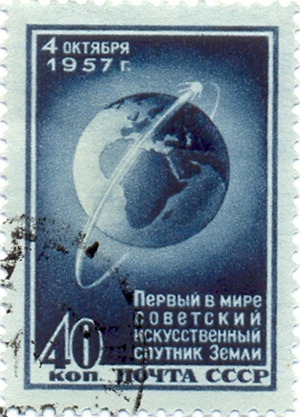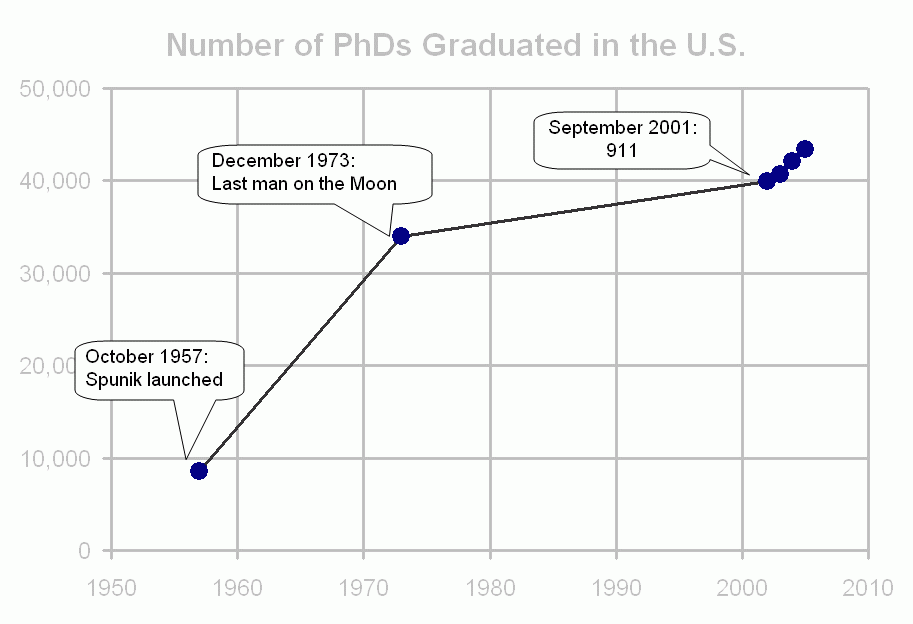 Â
Â
Content published for the NYTimes TimeSelect program is now free! This not only includes Op-Ed columnists Thomas Friedman and Maureen Dowd, but the venerable paper’s archives. Last year, when Time magazine opened its archives we looked at the history of Star Trek through Time‘s articles. This times(sic) I started to investigate the ever-popular Stephen Colbert. But the best I could find was a Correction and a funny ellipsis. I couldn’t even find that he doesn’t even read his own books, even though it is all over the blogoverse.
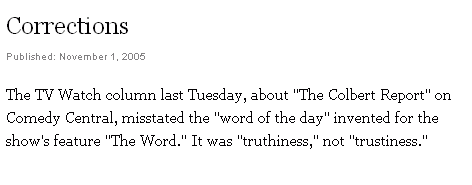 Â Â Â Â
    
However, I did find reviews of Claudette Colbert’s movies – starting with her first film, the silent 1927 Frank Capra rowing film, For the Love of Mike, and culminating in the 1934 five Oscar winner, Capra’s It Happened One Night (trailer), the prototype for the Hollywood screwball comedy.
For Love of Mike is a presumed lost movie. The following complete review by Mordaunt Hall (great name) is most of what is known about it’s content. Any rowers have a print? When this film was completed there was no money left to pay the director, Frank Capra (who considered it the worst film of his career), so he had to hitchhike back to Hollywood from New York City!
August 24, 1927 by Mordaunt Hall. “For the Love of Mike” makes no pretensions of being anything but a movie. It seemed to satisfy the audience at the Hippodrome yesterday afternoon, for there was laughter and, at the end, applause. It is not a dignified piece of work and neither is it ever convincing. Ben Lyon looks no more like a Yale athlete than Richard “Skeets” Gallagher looks like a coxswain of a racing shell. But during the boat race scenes, supposedly between Yale and Harvard, there is quite a good deal of interest, even though you have a hazy idea that Ben Lyon’s arms are not stroking the Yale crew. Here, Yale wins. It would be interesting to see this production in Cambridge, Mass., if the exhibitor had forgotten to change a few titles and still have Yale win. Mike, the hero of this extravaganza, is first perceived as an active and attractive baby, not quite a year old. He is left on the doorstep and brought up by Abraham Katz, Herman Schultz and Patrick O’Malley, who, as the child’s adopted fathers, show their ignorance of infants. It is a case of necessity being the mother of invention when it comes to dressing the baby and arranging it so that the child can drink its milk. Sometimes this baby looks at George Sidney, Ford Sterling and Hugh Cameron, who officiate in the rôles of the fathers, as if wondering why these grown-up, plump specimens of humanity were making so much fuss and being so inordinately ridiculous. What this infant prodigy might have muttered if he had been able to read the comic subtitles would perhaps have been even more interesting than his expression of contempt at some of the pantomime. Rudolph Cameron figures as the man with a past who is eager to collect a few sheckels wherever possible. He contributes some really thoughtful acting, which is more than Ben Lyon does. In fact, Mr. Lyon suffers by comparison in those scenes in which he appears with Rudolph Cameron (there are two Camerons in this film). Claudette Colbert, who was seen in Kenyon Nicholson’s play “The Barker,” lends her charm to this obstreperous piece of work. She seems quite at home before the camera.
September 7, 1929 by Mordaunt Hall. The closing scene of the talking picture, “The Lady Lies,” evoked a hearty round of applause from an audience that filled the Paramount Theatre yesterday afternoon. It is a good, popular entertainment, a film that sustains the interest and has the advantage of intelligent acting by the principals. … Miss Colbert is charming.
April 15, 1929 by Mordaunt Hall. “The Hole in the Wall,” an audible screen adaptation of a play by Fred Jackson, is a queer combination of senseless drama and some excellent pictorial direction. The plot of this mystic melodrama fails to be in the least disconcerting, but the idea of the imaginative swindlers having a mirror they use as a giant periscope to see who is at the door is interesting. … Another unfortunate feature of this production is that the able Claudette Colbert was called upon to act in it.
May 19, 1930 by Mordaunt Hall. Above the tumult, the shouting, the slang, the wisecracking and crudities of the audible pictorial version of the play “The Big Pond” looms the figure of Maurice Chevalier, whose whole-hearted acting compensates in no small degree for the farcical extravagances in this unimaginative narrative. … Claudette Colbert plays Barbara pleasingly, but through poor photography she does not look nearly as attractive as she is.
September 2, 1930 by Mordaunt Hall. It is, of course, rather amusing to perceive a Frenchman impersonating a nouvenu riche from Chicago and to observe the gestures of his wife. … But as good as Miss Colbert and the others are in their rôles, it is Mr. Menjou who shines in this production.
 I highly recommend The Smiling Liutenant,an early (1931) Lubitsch classic, along with A Merry Widow, Ninotchka, Heaven Can Wait … .Â
May 23, 1931 by Mordaunt Hall. Wit and melody swing through Maurice Chevalier’s latest picture, “The Smiling Lieutenant,” which is now adorning the Criterion screen. That cinematic artist, Ernst Lubitsch, supplies the rapier-like comedy and none other than Oscar Straus is responsible for the charming musical compositions.
Besides M. Chevalier’s clever acting and singing, there are splendid performances by Claudette Colbert as Franzi, Miriam Hopkins as the Princess and George Barbier as Adolf.
February 28, 1931 by Mordaunt Hall. Granted that “Honor Among Lovers,” the current film attraction at the Times Square Paramount and the Brooklyn Paramount, strikes a popular note, its incidents are frequently far from credible, particularly when the law enters into the story. It has, however, the virtue of being exceptionally well cast, with Claudette Colbert and Fredric March officiating as the principal characters. … Miss Colbert is excellent.
December 5, 1931 by Mordaunt Hall. “His Woman,” which was known as “Sal of Singapore” during most of its journey through the studied mills in Astoria, blew feverishly across the Paramount’s screen yesterday. It opens in one of those cinematic hell-holes in the Caribbean, where the sailors order gin straight and the dancing girls draw red roses across their lips to show the devil in them. Into this maelstrom of dank passions stalks honest Sam Whalan, skipper of a tramp freighter. He pushes a Spaniard. The Spaniard pushes back. Sam is a little tight, so he picks up a chair and dashes madly about in all directions. Maybe it is the camera, but Sam seems to be giving an imitation of an old woman stirring pudding as he swings his chair. That is only the beginning of Sam’s adventures. There are many more laughs later on; some of them intentional. … Gary Cooper and Claudette Colbert give their usual competent performances in the leading rôles, but they are beaten down by the general burlesque qualities of the story.
March 12, 1932 by Mordaunt Hall. There is nothing in “The Wiser Sex,” the present picture at the Paramount, that recalls in the remotest way the clever writing of Clyde Fitch, and yet this film story is said to be an adaptation of his play, “Her Confessions.” The introductory scenes rather lead one to expect a narrative inspired by Samuel Seabury’s recent activities in connection with the Hofstadter legislative committee, but soon it developes into a somewhat clumsy melodrama, with dialogue that is beyond even the ken of the competent cast to make effective. … Miss Colbert is charming, but often she might have been photographed to better advantage.
October 1, 1932 by Mordaunt Hall. Notwithstanding the acrimony that burst forth intermittently between George M. Cohan and Paramount Studio officials during the filming of “The Phantom President,” this feature, in which Broadway’s little giant makes his talking-picture début, is a crackerjack show. It is an adaptation of a novel by George F. Worts and was directed by Norman Taurog, who has to his credit among other productions that splendid shadow venture, “Skippy.” This film is an excellent example of technical skill and many of the episodes are highly imaginative. It was not surprising that it kept the audience at its first exhibition yesterday in a constant state of glee. In an introductory interlude there are the paintings of Washington, Jefferson, Lincoln and Roosevelt, which come to life, sing and deliver opinions concerning the country’s need for a man. Then one is introduced to Theodore K. Blair, a Presidential prospect, who, however, in the opinion of several of his friends lacks political charm and other characteristics. It is granted, however, that if he were to become engaged to the charming Felicia Hammond, they might nominate him with a certain assurance. But Miss Hammond, impersonated by Claudette Colbert, does not fancy being Mrs. Blair. … Miss Colbert is more attractive than ever as the bright-eyed, winsome Felicia.
April 9, 1932 by Mordaunt Hall. A wild affair, brimming over with clever nonsense, is now occupying the Paramount screen. It bears the title of “The Misleading Lady” and is an adaptation of a play of the same name by Charles W. Goddard and Paul Dickey which was presented in this city as far back as 1913. Its humor affords rich opportunities for Claudette Colbert, Edmund Lowe and Stuart Erwin. … Miss Colbert gives a capital portrayal as Helen.
June 25, 1932 by Mordaunt Hall. There is much to admire in the acting and in the composition of the scenes in the Paramount’s film, “The Man From Yesterday,” a story of the war which hails from a play known as “Wound Stripes.” The dialogue, however, is frequently open to adverse criticism, for the lines are often unconsciously humorous. … Claudette Colbert is gracious and competent as Sylvia.
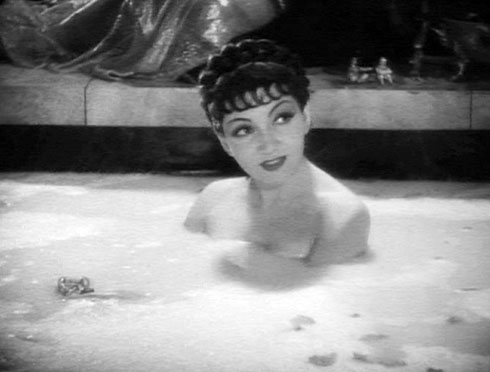 Â
Â
The un-reviewed 1932 movie, Sign of the Cross, is the pious DeMille spectacular where Colbert takes her famous milk bath.
January 21, 1933 by Mordaunt Hall. While George Arliss is to be seen at the Radio City Music Hall as a monarch who is only too glad to get rid of his throne, Claudette Colbert is appearing on the screen of the Paramount as a Queen who pleases her people by marrying a commoner—the man she has been in love with since she left her country a year before. It is interesting to note that Mr. March and Miss Colbert are also lending their talents to Cecil B. De Mille’s film of “The Sign of the Cross,” which is now at the Criterion … Miss Colbert, with all due respect for royalty, is almost too good looking for a queen.
May 18, 1933 by Mordaunt Hall. Culled from Max Miller’s book, “I Cover the Waterfront,” there has reached the Rivoli a stolid and often grim picture, the principal asset of which is the clever acting of the principals, particularly that of the late Ernest Torrence. Its drama is not nearly as successful as one might expect in a film directed by James Cruze. The sullen happenings are more shocking than suspenseful, and for moments of levity there are the mumblings and doings of a bibulous newspaper man and the Hollywood conception of the manner in which another reporter berates his city editor. … Miss Colbert does well as Julie, but she is scarcely convincing as a fisherman’s daughter, chiefly because she does not look the type.
October 7, 1933 by A.D.S. The unwed mother continues her losing fight with the cinema in “Torch Singer,” which, with appropriate wails and shrieks, was unfurled at the Paramount yesterday. This time it is the story of a handsome young woman (Claudette Colbert) who signs her baby away and becomes a grim and bitter dispenser of torch songs in midnight rendezvous. Her favorite is one called “Give me liberty or give me love.” The idea is that men made her suffer and she is going to make them pay. Her favorite epigram: “I’m like glass. Nothing will cut me but diamonds.” … Miss Colbert adds a fillip to her generally fine performance by singing her own songs in an attractive contralto.
February 23, 1934 by Mordaunt Hall. There are few serious moments in “It Happened One Night,” a screen feast which awaits visitors to the Radio City, and if there is a welter of improbable incidents these hectic doings serve to generate plenty of laughter. The pseudo suspense is kept on the wing until a few seconds before the picture ends, but it is a foregone conclusion that the producers would never dare to have the characters acted by Clark Gable and Claudette Colbert separated when the curtain falls. … Miss Colbert gives an engaging and lively performance.
This film feature is followed by a new Walt Disney “Silly Symphony” called “The China Shop,” which is as delightful as any of these prismatic cartoons. Like his other “Symphonies,” “The China Shop” constantly brings to mind aspects of “Alice in Wonderland.” A conception of Oscar Wilde’s “The Birthday of the Infanta” is the principal stage attraction.

Unknown couple outside Radio CityÂ
Radio City used to be such a bargain. Incidently, this movie also featured Alan Hale Sr., father of Alan Hale Jr., aka “the Skipper” on Gilligan’s Island.





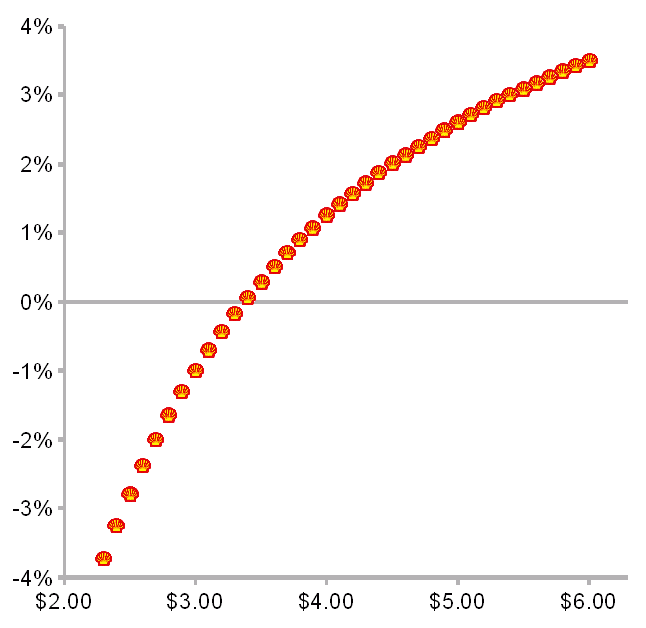
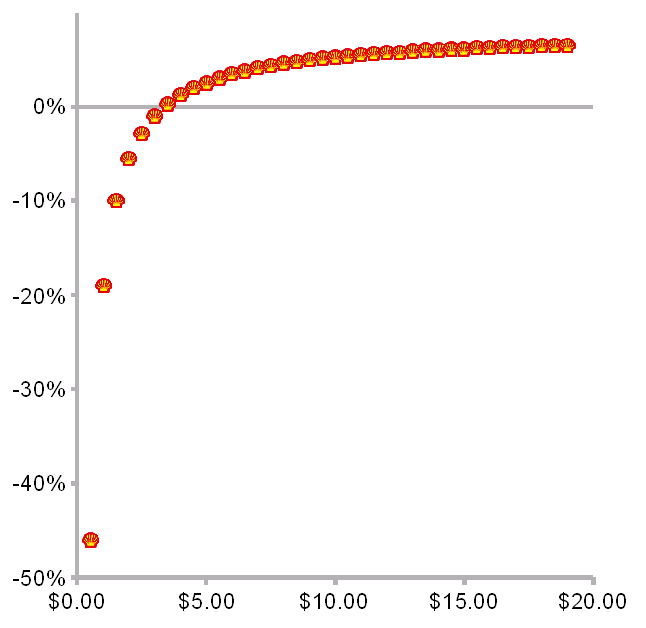





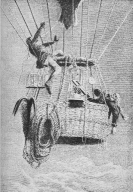 The nice thing is that the period only ever depends on q. Anticipating by 120 years mathematicians’ keen interest in modular forms, these periods were first related to the
The nice thing is that the period only ever depends on q. Anticipating by 120 years mathematicians’ keen interest in modular forms, these periods were first related to the 